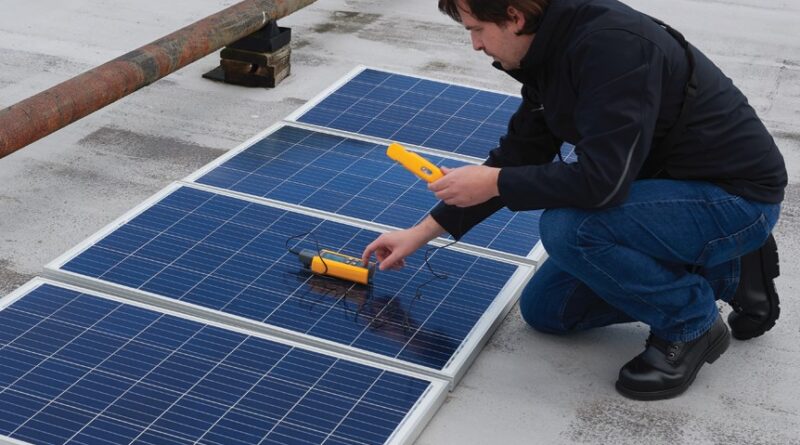Commissioning solar power system for maximum performance
Despite great engineering, no system is failproof. That’s where commissioning comes in, establishing a baseline of performance for customer acceptance and follow-on maintenance. Commissioning is important not only for photovoltaic (PV) system performance, but also for the longevity of equipment, safety, ROI, and warranties. Fluke, locally represented by COMTEST, is experiencing increasing demand for high-precision handheld devices which can measure photovoltaic (PV) systems.
Step 1: Photovoltaic system design and production
To find the expected production at the site, determine the solar resource and take into account any shading that may occur on the panels. The solar resource is measured in peak sun hours, which is the number of hours the installation achieves 1,000 watts per square meter per day. If the solar resource is good: 6,000 watts per square meter, or 6 peak sun hours.
Let’s say it’s a 10 kW PV array. Calculate expected annual production by multiplying the 10-kW array x 6 peak sun hours x 365 days per year x 0.85 (15% derating due to power losses in wiring and inverter). This array should produce 18,615 kWh of energy for us per year, or 51 kWh per day.
Step 2: Measuring PV performance
Once the system is installed, make sure it’s operating as designed by measuring its electrical characteristics and the actual power output of the array.
The performance of a PV array is based on its current-voltage (IV) curve. Not only does an inverter convert DC to AC, but it also maximizes its power output by capturing the current and voltage — since power is voltage x current — at which the string is producing the most power. The short circuit current (Isc) is the maximum current from a cell and no power will be produced because there is no voltage difference: the positive and negative wires are touching. The open circuit voltage (Voc) is the maximum voltage from a cell: no power will be produced because the circuit is open. The point at which the module produces the most power is called the maximum power point (mpp).
To know if an array is working as designed, know the values of the Voc and Isc, listed on the module datasheet. Measure the Voc and Isc before and after installation.
To test Isc, disconnect all parallel circuits and safely short the circuit. Measure the current between the positive and negative terminals through a multimeter. Set the dial to a current greater than expected. Record the values of Isc and Voc on the Fluke Connect™ app and save them for trending and reporting.
Step 3: Diagnosing variances
Even when installed correctly, a PV system may not meet the expected electrical production. It’s very important for a module to have the electrical characteristics specified, because an inverter has a minimum and maximum input current, below and above which it will have no power output.
Scenario 1: Open circuit voltage or short circuit current is higher or lower than on the datasheet
In this case, the string has one or more modules whose characteristics don’t meet specification. Open circuit voltage out of range means the inverter may not output power. Short circuit current out of range indicates there may have a module mismatch, which can severely degrade the array’s performance because the current of a string is limited by the module with the lowest current. Identify and replace the modules.
Scenario 2: Power output is low
If the power output is lower than expected, there may be a problem. While some fluctuation in output is expected, consistently less than predicted output could be a sign of a faulty string, a ground fault, or shading.
One reason could be hot spots, the accumulation of current and heat on a short-circuited cell, leading to reduced performance and possible fire.
Ground Faults are another, but they’re harder to diagnose and require testing the voltage and current of each conductor and the equipment grounding conductor (EGC), which carries stray current to the ground. Voltage and current on the EGC indicate a ground fault. Ground faults can occur due to damaged conductor insulation, improper installation, pinched wires, and water, which can create an electrical connection between a conductor and the EGC. Find the source of the problem and replace the damaged wires or improve the conditions.
Other reasons for low power output could be shading and poor tilt and compass direction (azimuth angle) for the location. Use a solar pathfinder to find any new sources of shading and remove them, if possible. While it may not be feasible to change the tilt and compass direction of the array to point the panels more directly toward the sun, you should know the tilt and azimuth angles to establish a baseline for future reference.
For systems with batteries, compare the expected battery voltage and state of charge with the actual using the Fluke 500 Series Battery Analyzer.




